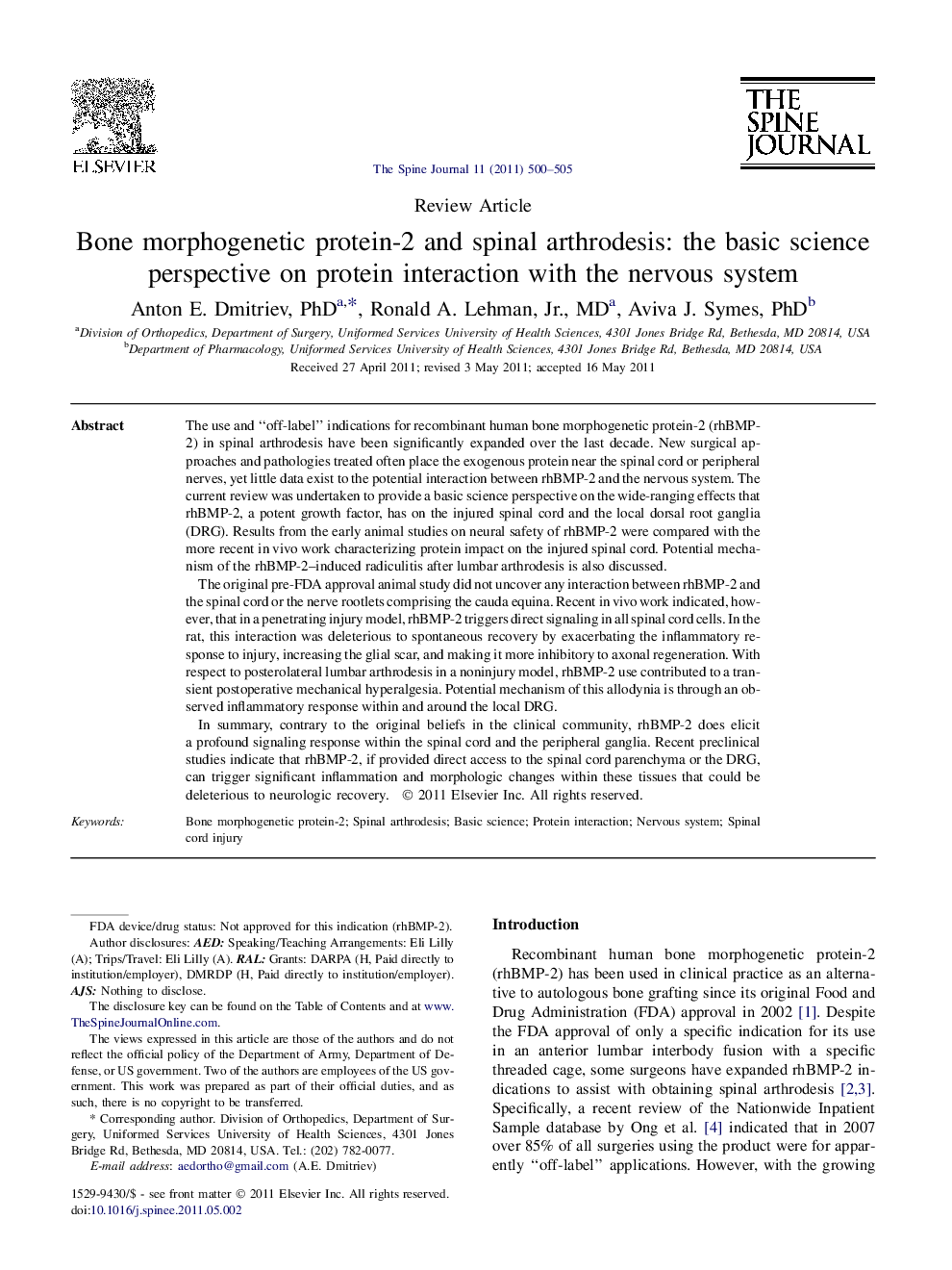| کد مقاله | کد نشریه | سال انتشار | مقاله انگلیسی | نسخه تمام متن |
|---|---|---|---|---|
| 4098970 | 1268628 | 2011 | 6 صفحه PDF | دانلود رایگان |

The use and “off-label” indications for recombinant human bone morphogenetic protein-2 (rhBMP-2) in spinal arthrodesis have been significantly expanded over the last decade. New surgical approaches and pathologies treated often place the exogenous protein near the spinal cord or peripheral nerves, yet little data exist to the potential interaction between rhBMP-2 and the nervous system. The current review was undertaken to provide a basic science perspective on the wide-ranging effects that rhBMP-2, a potent growth factor, has on the injured spinal cord and the local dorsal root ganglia (DRG). Results from the early animal studies on neural safety of rhBMP-2 were compared with the more recent in vivo work characterizing protein impact on the injured spinal cord. Potential mechanism of the rhBMP-2–induced radiculitis after lumbar arthrodesis is also discussed.The original pre-FDA approval animal study did not uncover any interaction between rhBMP-2 and the spinal cord or the nerve rootlets comprising the cauda equina. Recent in vivo work indicated, however, that in a penetrating injury model, rhBMP-2 triggers direct signaling in all spinal cord cells. In the rat, this interaction was deleterious to spontaneous recovery by exacerbating the inflammatory response to injury, increasing the glial scar, and making it more inhibitory to axonal regeneration. With respect to posterolateral lumbar arthrodesis in a noninjury model, rhBMP-2 use contributed to a transient postoperative mechanical hyperalgesia. Potential mechanism of this allodynia is through an observed inflammatory response within and around the local DRG.In summary, contrary to the original beliefs in the clinical community, rhBMP-2 does elicit a profound signaling response within the spinal cord and the peripheral ganglia. Recent preclinical studies indicate that rhBMP-2, if provided direct access to the spinal cord parenchyma or the DRG, can trigger significant inflammation and morphologic changes within these tissues that could be deleterious to neurologic recovery.
Journal: The Spine Journal - Volume 11, Issue 6, June 2011, Pages 500–505